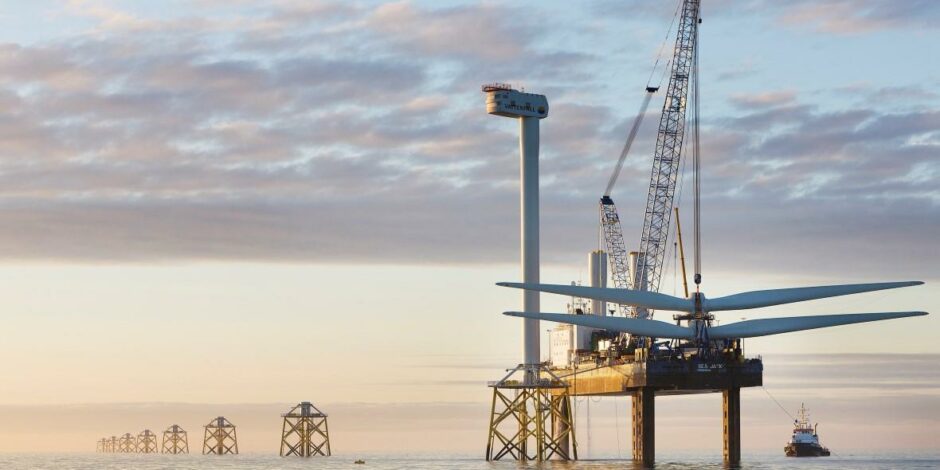 © Supplied by Vattenfall
© Supplied by Vattenfall The decision by Oil & Gas UK to broaden its remit and change its name name to reflect the UK’s intended shift to low carbon energy pretty much across the board comes as no surprise.
However, its timing is curious, but there again it isn’t.
The chameleon had to change its outer skin sooner or later and it might as well be now given how fashionable the term energy transition has become in the North Sea, if not in many places else.
I specifically liken OGUK to a chameleon rather than a leopard because spot changing is a myth whereas chameleons are masters of change to assure their survival.
If you look around the UKCS, of course there are operators who have no interest in going low carbon, but others are increasingly understanding the critical need for mankind to halt climate change and reverse its worst impacts.
Equinor is a leader in this regard and BP has finally made a major commitment via the ScotWind licensing round Morvern offshore windfarm award. Both have hydrogen in their masterplans too.
And, though painfully slowly, the oil and gas supply chain is waking up to the low carbon opportunity.
I can’t help but believe that this dramatic rebranding to Offshore Energies UK and structural remodeling into four major activity blocks … oil and gas production, offshore wind, hydrogen production and CO2 capture … will help accelerate the transition.
OGUK began researching the case for change a year ago. Having carried out the rebrand and basic restructuring, now the hard work really begins under the leadership of CEO Deirdre Michie.
Given the still considerable size of the North Sea oil and gas industry and the track record of OGUK’s relative effectiveness, one has to wonder how this change will impact other trade bodies and the Oil & Gas Authority.
Let’s start with the regulator, which has a pivotal role to play in the UKCS transition process. Moreover, it appears to have successfully built bridges with the now fast growing and accelerating offshore wind industry, which is now characterised by massive projects and budgets every bit as large as some of the most ambitious oil and gas developments of the past 50 years.
The number of major oil brands with investments in both camps is growing and they will be looking for greater cross-sector co-ordination.
However, the wind industry doesn’t have an OGA and long ago I started to muse on the regulator becoming a super-regulator with oversight not just of oil and gas but also at least maritime power generation, viz offshore wind as increasingly muscles its way into the North Sea, placing increasing pressure on oil and gas and other activities such as commercial fishing.
One understands that the OGA is indeed looking at future options and rebranding too.
But what about Renewable UK, ScottishRenewables and probably the most successful regional, integrated trade association of all … EEEGR.
Let’s start with East of England Energy Group, which through its large and diverse membership has a strong grip on gas production, offshore wind and nuclear, and would like to see CO2 storage really take off in the Southern Gas Basin.
Seems to me that it could be a natural ally of the restructured OGUK and that entering into some form of alliance sooner than later could work to mutual advantage. Perhaps eventual merger too.
Not so easy with RUK or SR and perhaps they feel threatened, though I’m fairly sure both will deny that.
A revamped OGUK with its four core remits surely qualifies as the mammoth in their refrigerator because of its size, power and the fact that RenewableUK is rather proprietorial about offshore wind, unsurprisingly.
It says Renewable UK says of itself: “Membership is for organisations involved in wind and marine renewables – from small consultancies to large international project developers and manufacturers.”
That makes it just as narrow in its focus as OGUK was. So, whilst the latter has determined that it must follow a more or less integrated energy road, the former is the one stuck in a narrow groove and will need to consider its options.
There is no room for two large trans-UK trade organisations playing in offshore wind. Sooner or later there has to be a calling to account and Offshore Energies UK is best placed to become the clear leader.
Scottish Renewables regards itself as the “Voice of Scotland’s Renewable Energy Industry” and, like EEEGR, could possibly work in alliance with the revamped OGUK. But merger? I think not if Scotland succeeds in its battle to break clear of the Act of Union 1707.
Quite how onshore renewables might fit into an integrated trade association with Offshore Energies UK at its future potential core is something I have still to think about. And I plain don’t know about nuclear which, to me is the ultimate energy pariah and not a long-term solution based on past performance including waste legacy.
One way or another, a major shake-up of how the UK’s high and low carbon energy sectors become represented in an integrated way has been precipitated.
For sure it will change and probably rapidly to match the transition that necessarily impacts every one of us.
We already know from the current and past crises that this is going to be a rough journey. And, by heavens, it will require strong oversight/integrated regulation and industry representation to match.
